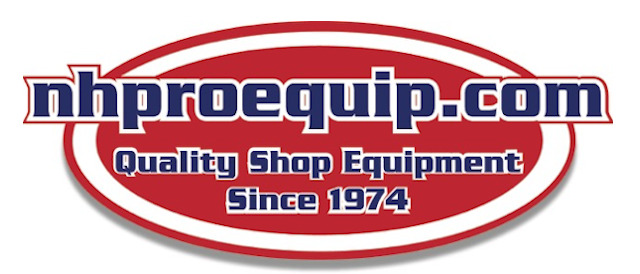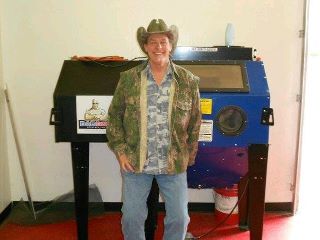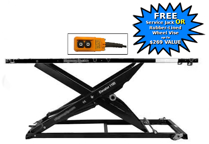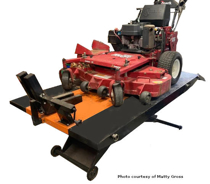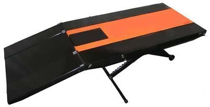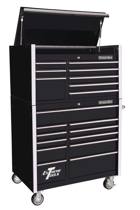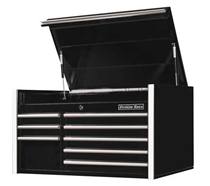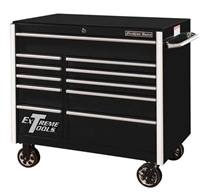- Register
- Log in
- Wishlist (0)
- My Cart (0) You have no items in your shopping cart.
- 2024
- 2023
- 2022
- 2021
- 2020
- 2019
- 2018
- 2017
- 2016
- 2015
- 2014
- 2013
- 2012
- 2011
- 2010
Blog
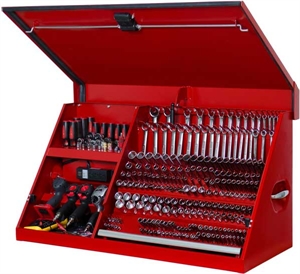 We've just added the latest and greatest offerings from Extreme Tools and wanted to share with you some of the newest additions to their line (and now ours!) that we are really excited about. The image above is of the 41" portable workstation (product # PWS4100TX). Visit the link and view an awesome financing option, too. The Extreme PWS4100TX 41" Portable Workstation measures 41"W x 17-3/8"D x 21-1/2"H. It is made of 16 gauge steel construction with welded seams, and comes with a power tool rack with built-in power strip. This versatile workstation holds and organizes your most needed tools: the wrench rack holds 17 SAE & 22 metric combination wrenches, screwdriver/nut driver holders, (64) 1/4" deep & standard socket pegs, (66) 3/8" deep socket pegs, (28) 3/8" shallow socket pegs, (64) 1/2" deep and shallow socket pegs, and (47) screwdriver/ ratchet drivers & extensions. The socket tray even lifts to access more tool storage underneath. This workstation also features a lockable lid which secures tools in place when it's closed, and it has a gas spring that raises the lid when unlatched for easy access. Heavy-duty side handles make moving this workstation an easy process around your shop or garage. It features weather stripping, which creates tight seal against dust and moisture, for long-lasting life. Textured finish is available in black or red (*shown above), and is weather-resistant. 30" workstations are also available, and both of these great products are currently in stock!
We've just added the latest and greatest offerings from Extreme Tools and wanted to share with you some of the newest additions to their line (and now ours!) that we are really excited about. The image above is of the 41" portable workstation (product # PWS4100TX). Visit the link and view an awesome financing option, too. The Extreme PWS4100TX 41" Portable Workstation measures 41"W x 17-3/8"D x 21-1/2"H. It is made of 16 gauge steel construction with welded seams, and comes with a power tool rack with built-in power strip. This versatile workstation holds and organizes your most needed tools: the wrench rack holds 17 SAE & 22 metric combination wrenches, screwdriver/nut driver holders, (64) 1/4" deep & standard socket pegs, (66) 3/8" deep socket pegs, (28) 3/8" shallow socket pegs, (64) 1/2" deep and shallow socket pegs, and (47) screwdriver/ ratchet drivers & extensions. The socket tray even lifts to access more tool storage underneath. This workstation also features a lockable lid which secures tools in place when it's closed, and it has a gas spring that raises the lid when unlatched for easy access. Heavy-duty side handles make moving this workstation an easy process around your shop or garage. It features weather stripping, which creates tight seal against dust and moisture, for long-lasting life. Textured finish is available in black or red (*shown above), and is weather-resistant. 30" workstations are also available, and both of these great products are currently in stock!Today, my focus is Facebook. And, ok, maybe there's nothing "ugly" to report, but I had to use a little creative license to get you to start reading... While we've been transitioning our new website, I've been a little lax in posting to FB because of the many other things that have taken priority. I'm realizing how important it is to stay "checked in" to our industry community, for a number of reasons. FB is one of the many online networking avenues we've explored - along with, now, the majority of small businesses out there. Since it has grown by leaps and bounds in popularity, and offers a (FREE!) platform for businesses to get their name out there, it's really a no risk, no-brainer mode of communication. We can connect with current and potential customers, add as many photos and as much business info as we'd like, and have a dynamic platform with which to get our information out there. Popular/ free / dynamic is an awesome combination, when you think about it. There are plenty of free interactive websites out there that allow you to post articles or links, or PDFs. But are they good quality? And who are they targeting? As far as the "dynamic" element, using Facebook regularly keeps you on the radar of everyone with whom you are connected. SEO algorithms are based around how often websites change and how often people are posting to them. Websites that are being updated often, with blogs being updated often, carry more weight in the eyes of Google. It makes sense; if you are working hard to offer fresh, unique content for folks, Google will reward you for it! And as a website peruser, I know if I'm looking to buy something and stumble upon a website that hasn't been updated since 2007 I'm more likely to find one that appears to be more current, e.g., "more valid." Facebook is not factored into those algorithms, because it's so widespread and "easy," but it's the same concept. The more often you post, the more people are aware of you. It's just a good habit to get into for when you start blogging and need to stay consistent with posting! One other great thing about Facebook is, YOU are choosing your audience. Case in point: We collect data from all of our customers, whether they are online customers or through the shop. We make sure we 'friend' each of these people on Facebook so they can stay in the loop with us if we are offering any promotions, or running sales. We've established a working relationship with them already, so it's a logical next step. It's a great non-invasive way to stay connected, yet if they see something that catches their eye, they can shoot a message to us. The other point I wanted to mention about the friend list on Facebook, is that it can evolve so easily and quickly. I just had a local Facebook friend in the auto industry recommend a bunch of his friends to us, presumably because we have mutual interests in the auto industry. A targeted audience has so much more potential for a business owner. I mean, it's nice to be connected to your grandmother on Facebook, but is she going to be interested in buying a car lift? I think because Facebook is so widespread, small businesses have that working in their favor. However, the counterpoint is that it is SO popular that your posts get diluted by the hundreds of others who are posting, too. But. I think, ultimately, it can't hurt. It's where people's attention is now, and maybe 1 in 10 posts grabs someone attention, but given the amount of time it takes to post, that's not so bad. The bottom line is that we stay on the radar of those who might be interested in what we have to offer. And conversely, we can learn more about our customers by their posts, and hopefully develop a continued and better working relationship through that knowledge. So..please don't forget to "like" us - you can find our business page here: https://www.facebook.com/pages/Clark-Heintz-Tools-Equipment-LLC/175943479086121?sk=wall
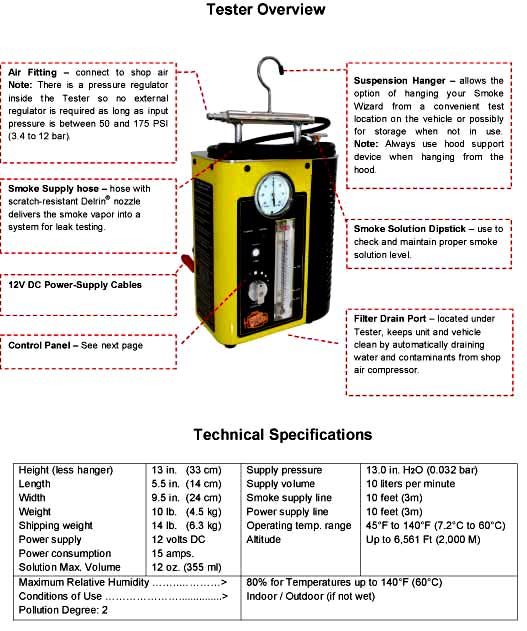 Connect to workshop airline for general purpose leak detection applications. Smoke exiting a very small leak is sometimes even easier to see if after filling the system with smoke you reduce the smoke flow by turning the flow control knob clockwise, which slows the exiting smoke velocity and helps you see very small leak(s) Use the white light provided to highlight the smoke exiting a leak. Use the Ultraviolet (UV) light and yellow glasses provided to look for the fluorescent deposit at the exact location of a leak. When using alternate source of UV light, be sure it is one that covers the 400 nanometer (nm) UV light range. When operating the Tester in near freezing temperatures, cycle the operation of the Tester 15 seconds ON and 15 seconds OFF for approximately the first minute or two of operation. This will allow the Tester to reach its optimum operating temperature. When testing an engine's intake or exhaust system for leaks, it is recommended that the engine be cold. Small leaks may be sealed due to thermal expansion. https://www.nhproequip.com/smoke-wizard-gld-40-leak-detector-machine
Connect to workshop airline for general purpose leak detection applications. Smoke exiting a very small leak is sometimes even easier to see if after filling the system with smoke you reduce the smoke flow by turning the flow control knob clockwise, which slows the exiting smoke velocity and helps you see very small leak(s) Use the white light provided to highlight the smoke exiting a leak. Use the Ultraviolet (UV) light and yellow glasses provided to look for the fluorescent deposit at the exact location of a leak. When using alternate source of UV light, be sure it is one that covers the 400 nanometer (nm) UV light range. When operating the Tester in near freezing temperatures, cycle the operation of the Tester 15 seconds ON and 15 seconds OFF for approximately the first minute or two of operation. This will allow the Tester to reach its optimum operating temperature. When testing an engine's intake or exhaust system for leaks, it is recommended that the engine be cold. Small leaks may be sealed due to thermal expansion. https://www.nhproequip.com/smoke-wizard-gld-40-leak-detector-machine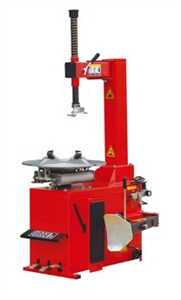 We apologize for our delay in getting back into the swing with the blogging! As we launch our new website, we are still working out some of the kinks, and uploading new products fast and furiously! Additionally, we've added some new manufacturers to our website (we'll cover that in another post!), but we've also uploaded new products of some of our "tried and true" manufacturers. We've had Titan motorcycle and car lifts up for awhile; however, they also have a line of wheel balancers and tire changers that we've recently added, due to popular demand. It offers swing arm style and manual operation of mount/demount tool. Features include Swing arm style, Manual operation of mount/demount tool, Four pneumatic clamps and double acting cylinders, Side mounted bead breaker. It comes with a water separator, lubricator and pressure regulator. Please visit the link above or call Clark for more information at 603-234-2612. Thanks for sticking with us during the transition! We intend to post more regularly now that the new site is falling into place...
We apologize for our delay in getting back into the swing with the blogging! As we launch our new website, we are still working out some of the kinks, and uploading new products fast and furiously! Additionally, we've added some new manufacturers to our website (we'll cover that in another post!), but we've also uploaded new products of some of our "tried and true" manufacturers. We've had Titan motorcycle and car lifts up for awhile; however, they also have a line of wheel balancers and tire changers that we've recently added, due to popular demand. It offers swing arm style and manual operation of mount/demount tool. Features include Swing arm style, Manual operation of mount/demount tool, Four pneumatic clamps and double acting cylinders, Side mounted bead breaker. It comes with a water separator, lubricator and pressure regulator. Please visit the link above or call Clark for more information at 603-234-2612. Thanks for sticking with us during the transition! We intend to post more regularly now that the new site is falling into place...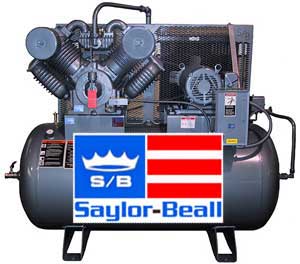 1. Disc-type valves increase efficiency and lengthen life
1. Disc-type valves increase efficiency and lengthen life
2. Finned cast-iron intercooler maximizes cooling and lengthens life
3. Rugged cast iron cylinder head withstands stress from heat
4. Threaded plugs simplify access to valves
5. Replaceable needle bearings lengthen rod life and simplify service
6. Precision honed cylinders increase efficiency and oil control
7. Four piston rings increase efficiency and oil control
8. Centrifugal unloader provides no load starting
9. Two oversized tapered roller bearings lower friction adn extend crankshaft life
10. Sideplate eases access to crankshaft and rods
11. Replaceable insert bearings extend rod life and simplify service
12. Cast iron crankcase reduces vibration
13. Automotive type, large diameter ductile iron crankshaft provides extra strength and longer wear https://www.nhproequip.com/saylor-beall-air-compressors-made-in-usa
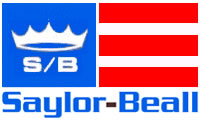 January 17, 2012: Through this partnership, Tsunami will offer to the marketplace a complete compressor and dryer package built into one integrated system. Saylor-Beall a manufacturer of industrial grade air compressors for more than 90 years, built its reputation on quality and the proven ability to meet the special needs of their customers. They are known for industrial quality designs, prompt shipments and custom applications. Through an on-going program for continuous improvement, Saylor-Beall has developed better materials, designs and manufacturing processes. This has resulted in an outstanding line of quality air compressors that meets the needs of the most rugged applications. Tsunami Compressed Air Solutions is a complete line of products designed and developed to assist customers in obtaining dry, clean air for their specific application needs. The systems use the latest technology to provide the cleanest, driest compressed air available. Use of the Tsunami products can help save 10%-15% of compressed air energy costs. Check out Clark Heintz Tools & Equipment's line of awesome Saylor Beall air compressors here.
January 17, 2012: Through this partnership, Tsunami will offer to the marketplace a complete compressor and dryer package built into one integrated system. Saylor-Beall a manufacturer of industrial grade air compressors for more than 90 years, built its reputation on quality and the proven ability to meet the special needs of their customers. They are known for industrial quality designs, prompt shipments and custom applications. Through an on-going program for continuous improvement, Saylor-Beall has developed better materials, designs and manufacturing processes. This has resulted in an outstanding line of quality air compressors that meets the needs of the most rugged applications. Tsunami Compressed Air Solutions is a complete line of products designed and developed to assist customers in obtaining dry, clean air for their specific application needs. The systems use the latest technology to provide the cleanest, driest compressed air available. Use of the Tsunami products can help save 10%-15% of compressed air energy costs. Check out Clark Heintz Tools & Equipment's line of awesome Saylor Beall air compressors here.
Not all air compressors are created equal. Aside from tank size, horsepower, and PSI ratings, of course, they pretty much look and operate the same way. What many users may not realize however, is that there are more important differences than meet the eye, particularly when it comes to the compressor pumps themselves. The first mechanical compressors were used hundreds of years ago by blacksmiths. Used for generations, these simple bellows-type compressors became museum pieces during the Industrial Revolution with the introduction of piston power. Originally used in steam engines to drive machines, pistons were soon adapted to a wide range of other uses, including air compression and storage for future use. Today's compressor pumps are based on the same principles.
However, they have evolved significantly over the years, and have become the heart of many durable, high performance machines. Understanding the differences among these components can help users determine which air compressor is right for their needs.
The basics of piston-type pump operation Most air compressors are reciprocating or piston-type air compressors. Their operation is similar to an automotive engine. Inside the pump, a crankshaft moves a set of pistons up and down. On the down-stroke, air is drawn into the compression chamber through a one-way valve; as the rising piston on the up-stroke compresses the air, a second one-way valve opens to force the air into a pressure tank. As more air is forced into the tank, the pressure inside the tank rises. Most pumps are either single-stage or two-stage. The difference refers to the number of times intake air is compressed in a pump. A single stage compressor compresses intake air one time before sending the air into a storage tank. Single-stage air compressors can have one, two, or four cylinders, but the air is only compressed once. Most single-stage air compressors have a maximum pressure of 125 PSI. Two-stage air compressors compress air twice before sending it into a storage tank. A two-stage compressor has a minimum of two cylinders: a low-pressure cylinder (largest) and a high-pressure cylinder (smallest). Air is compressed once in the large cylinder and then sent through an air cooling tube, which reduces discharge air temperatures. Lower temperatures improve operating durability and efficiency. In most lower horsepower compressors, the interstage coolers use the same airflow that cools the rest of the compressor pump structure. In larger compressors, as well as in some special applications, water cooled interstage coolers may be used. Upon reaching the small cylinder, the air is compressed again. Two-stage air compressors produce a larger volume of air at higher pressures than smaller single-stage compressors. Two stage air compressors have a maximum pressure of 175 PSI.
Pump cylinders A wide variety of cylinder arrangements and designs are used in compressor pumps. These include a single vertical cylinder, dual vertical in-line cylinders, dual horizontal opposed cylinders, and single "V" or "W" designs made by combining two sets of in-line cylinders. The number and size of cylinders used is dependent on the capacity required and the number of stages. Multiple cylinders may be used in single stage compressors. Usually all the cylinders will be the same size. In two-stage compressors, the size of each successive stage cylinder is reduced as the air passed from cylinder to cylinder requires less space at each stage. Cylinders are made from machined castings that can be solid cast iron, die cast aluminum (with or without an iron or steel bore liner), or from solid aluminum. Solid cast iron is considered the most durable. For small oilless compressors, cylinders formed from aluminum tubing are often used. The cylinders may be separate from the crankcase and cylinder heads, or may be cast together with the crankcase or the cylinder head. For easier serviceability, having the crankcase separate from the cylinder is preferred. External fins on the cylinder combined with cooling airflow dissipate the heat of compression in air-cooled types.
Oilless, splash, and pressure lubrication Air compressors and their pumps are no different from other large machines in that proper lubrication is essential to insure long life and maximum service from an air compressor. Three types of lubrication systems are used in compressors: oilless, splash and pressure. In oil-free and oilless compressors, there is no oil on the cylinder walls. Oilless designs depend on the self-lubricating materials to allow the piston to slide in the cylinder and the grease in the sealed bearings. Splash lubrication relies on an oil dipper attached to the bottom of the connecting rod, which randomly splashes oil from the crankcase reservoir onto the bearings and internal parts of the compressor to keep them properly lubricated. This is the most common form of lubrication and is used in most reciprocating type air compressors. Pressure lubrication uses an oil pump driven by the crankshaft to draw oil out of the crankcase. It is then filtered and pumped through passageways in the crankshaft to the connecting rod bearing surfaces. This action provides direct, positive lubrication to these critical parts. Oil also sprays onto the cylinder walls lubricating the piston and piston bearings. A pressure lubrication system costs a little more, but delivers superior lubrication and is the system of choice for heavy-duty industrial service.
Drives Electric motors and internal combustion engines are most commonly used to drive the air compressor pumps. Direct drive and belt drive arrangements are available. Small single stage oilless compressors for home and light commercial use are generally direct drive electric motor designs. Small oil lubricated machines may be direct drive electric or belt drive. Larger oil-lubricated machines from 5 to 25 HP are almost exclusively belt drive. Only a few small oil lubricated units are built direct drive with internal combustion engines. Some special configurations use power takeoff drives in service trucks and heavy equipment. Drive design must take into account the torque fluctuation of both the compressor and the driver. Flywheels are selected to give the optimum combination of inertia to minimize fluctuations but still allow start-up under adverse conditions. In direct drive designs, the motor may be integrated with the compressor, sharing a common shaft and support structure as in small oilless types or may be connected with a coupling for larger sizes. In all cases the drive components must be properly shielded for safety and comply with OSHA requirements. Compressors for use in the home usually meet even more stringent UL requirements. Belt drive designs may use vee, poly vee, or multiple belts, and may require periodic maintenance. Most direct drive designs require little or no maintenance.
Selecting an Air Compressor The relation of compressor pumps to performance is critical when making your compressor purchase decision. Although the number of air compressor choices can be overwhelming, selecting the right mode; can be made easy by asking a few important questions. For what applications will the air compressor be used? Air compressors are used for jobs ranging from inflating tires to operating a factory. The application will determine the type of air compressor needed. Portable single-stage air compressors are used for one person operating air tools. Contractor air compressors are recommended when minimal weight, portability, and low maintenance is important. Stationary, single-stage air compressors are used for small shops in a garage or maintenance facility. Two-stage air compressors are recommended for industrial applications. What tools will be used, and how much CFM is needed? Some tools require more air (CFM) than others do. For example, sanders require more air than an air drill or air ratchets. Also the number of tools operated at once is a factor. How often will the air compressor be used? For regular use (several times per week), select an air compressor with 50/50 duty cycle such as a portable, contractor air compressor. For commercial/Industrial use (daily), select a higher duty cycle air compressor such as high performance, single-stage or two-stage air compressor. Do you have plans for future expansion? If you expect to need more air for more uses in the near future, it is less expensive to buy up to the next larger air compressor than to purchase a second compressor in the future. What type of power is available? Portable air compressors typically operate on 115 volt, 15 amp circuits. Stationary, single-stage compressors and some large portable compressors operate on 230 volt, single-phase power. Two-stage air compressors 10 HP and larger operate on three phase power only, 5 and 7.5 HP. Two-stage compressors are available for single-phase and three-phase power. If no electrical power is available, gas engine air compressors are required.
Now you know Although a first glance at a piece of equipment like an air compressor can be intimidating, a bit a knowledge and insight will make this easier. It's really no different than shopping for a car. By doing your homework, shopping around, and asking the right questions, you will find the best air compressor to fit your needs.
Check out Saylor Beall Compressors and FS Curtis Compressors here.
